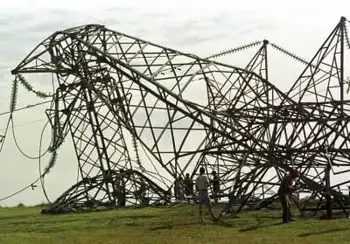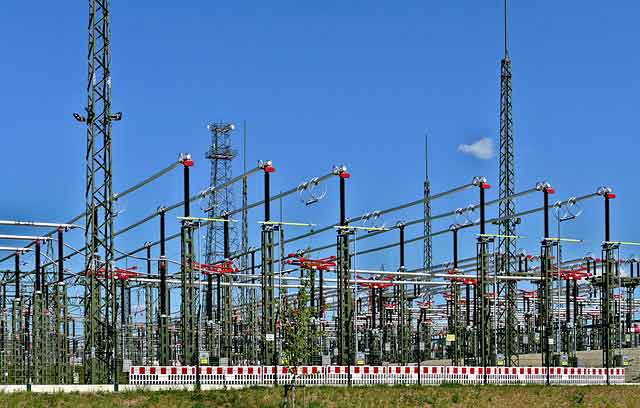Utilities need to be aware of swine flu
By New York Times
NFPA 70e Training
Our customized live online or in‑person group training can be delivered to your staff at your location.

- Live Online
- 6 hours Instructor-led
- Group Training Available
As swine flu appears across North America and various parts of the world, officials are attempting to explain and contain this disease.
The three come from different viruses and carry different kinds of danger, depending on ease of transmission and virulence. As a benchmark, the deadliest influenza pandemic in the past century, the Spanish influenza of 1918 to 1919, had an estimated mortality rate of around 2.5 percent but killed tens of millions of people because it spread so widely.
The new swine flu cases are caused by an influenza strain called H1N1, which appears to be easily passed from person to person. Mexican health authorities have confirmed 149 deaths from that flu and are investigating the illnesses of 1,600 people, and the United States, Canada, Spain and other countries have confirmed or are investigating cases.
But doctors have little information yet on the mortality rate, as there is no reliable data on the total number of people infected. Reports from the United States suggest that some cases may be mild and therefore may go undetected — allowing the disease to spread further. Flu experts are trying to determine if this year’s flu shots, which contain H1N1 strain, offer any protection.
In contrast, the lethal avian flu that has kept world health authorities anxious for years is caused by H5N1 influenza virus. It has killed 257 of the 421 people who have contracted it, or 61 percent. But it has shown very little ability to pass from person to person, mainly infecting poultry, and some experts have suggested that there may be something about the H5N1 virus that makes it inherently less transmissible among people.
SARS — severe acute respiratory syndrome — is both easily spread and virulent. In the 2003 outbreak in Hong Kong, it killed 299 of the 1,755 people it infected there, or 17 percent.
The lessons learned from SARS did not go to waste in Hong Kong. While Mexico struggles to confirm cases of swine flu and sends samples to the United States, Hong Kong is already performing swift genetic tests on patient samples and will have laboratories doing so at six local hospitals. Tens of thousands of doctors and nurses, including retirees and those with medical training who have moved to other occupations, are tracked on databases and ready to be mobilized.
Contingency plans are ready to keep public transport, electricity, food supplies, telecommunications and other vital services running even if large numbers of people fall ill. And at a time when many hospitals in the United States are already at full capacity and keep few extra beds in reserve, Hong Kong has 1,400 beds in respiratory isolation units, mostly built over the past six years for fear that bird flu or SARS would become a serious problem, and 15 times as many beds as the territory needs on an everyday basis.
For a population of seven million people, Hong Kong has stockpiled 20 million treatment courses of Tamiflu, a medicine to which the new swine flu virus has not yet developed resistance. Hong Kong also has AsiaÂ’s best-known flu specialists and extensive research labs that were expanded in response to fears of SARS or a long-feared pandemic of bird flu, which is caused by a different influenza virus from swine flu.
Government lawyers are also moving quickly, carrying out all the procedures to make swine flu a disease for which health professionals are required by law to notify the authorities of any suspected case. The Hong Kong government also has broad and detailed legal powers to quarantine possible cases and suspend a range of civil liberties in order to track down anyone who has been in contact with a carrier of a communicable disease; many other countries, including the United States, are still debating how to handle legal issues during a possible pandemic.
SARS “gave us a lot of valuable insights and practical experience in managing a large outbreak,” said Gabriel Matthew Leung, Hong Kong’s under secretary for food and health.
Hong Kong is unusually vulnerable to flu. World Health Organization officials describe Hong Kong and its labs as their sentry for flu in Asia, because the territoryÂ’s tests may uncover infected people arriving from other places that are either unequipped to identify influenza or have a habit of keeping medical problems a secret.
Still, in a measure of the terror that SARS has left, the territoryÂ’s stock market suffered some of the heaviest losses in Asia on Monday on swine flu fears. The Hang Seng Index fell 2.74 percent. Shares of Cathay Pacific, the dominant airline here, dropped 8 percent and shares of mainland ChinaÂ’s Air China fell 12.8 percent on fears that many passengers will stop flying.











